(VOVWORLD) - As any Romanian will eagerly explain, there’s much more to know about Romania than the legend of Dracula. Constantly featured among Europe’s best travel destinations, Romania has plenty to surprise those looking for an exciting, off-the-beaten-track destination. In today’s show, we’ll have Gabriela Drobota from Romania to share with us some facts about Romania, its culture, people, and lifestyle.
VOV Reporter: Welcome to our show, Gabriela Drobota. Could you please introduce a little bit about yourself to VOV audience?
Gabriela Drobota: Thank you so much. I’m honoured to speak to VOV audience about Romanian culture and traditions. A little bit about me. I’m Gabriel Drobota. I’m a Romanian from a region of Moldova in Romania. I’ve been travelling and living in many different countries around the world for work or study and now I’m now currently located in Singapore but I always want to go back home to Romania where I have my family, my friends and all the good memories of my childhood. So I’m really happy to answer your questions today.
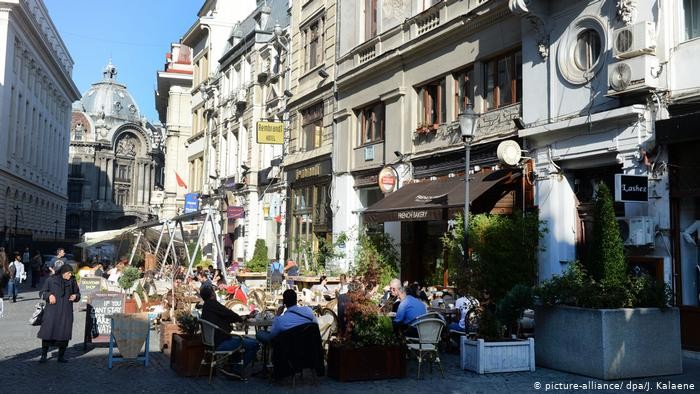 Romania's Bucharest historic center. (Photo: Kalaene/dpa) Romania's Bucharest historic center. (Photo: Kalaene/dpa) |
VOV Reporter: Thank you for joining us. How do you describe Romanian culture and traditions?
Gabriela Drobota: The distinctive culture of Romania is a result of its historical evolution. The culture has been imbibed from the Dacians, who had occupied the area in the past. One way in which the people of Romania showcase their brightly coloured ornaments and costumes is during the traditional dance during the major festivals. Beautiful traditional woven carpets, wood hand carvings, pottery and clothing are just some of the elements of traditional Romanian culture. Intricately decorated Easter eggs, painted glass and Icons painted on wood substrates art are among the special folk arts of Romania. These items can also be found in many shops, street markets and vendors near tourist attractions throughout the country.
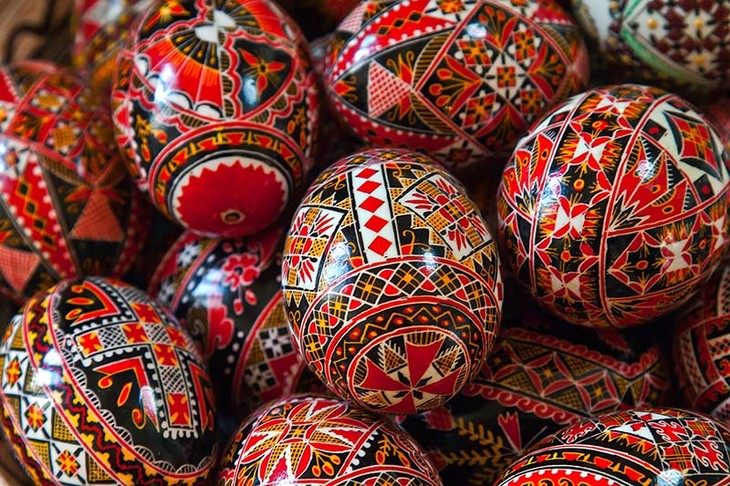 Red dyed eggs made in Bukovina, a region divided between Romania and Ukraine. (Photo: rolandia.eu) Red dyed eggs made in Bukovina, a region divided between Romania and Ukraine. (Photo: rolandia.eu) |
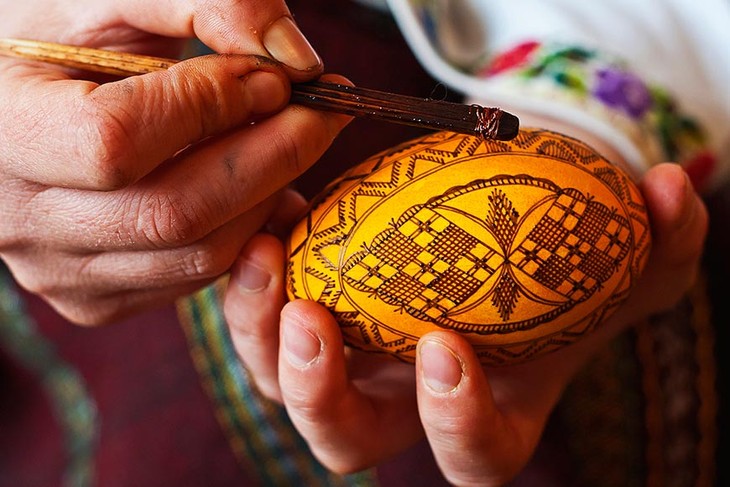 An egg decorated with traditional Romanian motifs. (Photo: Rolandia.eu) An egg decorated with traditional Romanian motifs. (Photo: Rolandia.eu) |
VOV Reporter: Romania’s special folk arts are so adorable. What about the Romanian language?
Gabriela Drobota: While many perhaps expect Romanians – due to the country’s location in Eastern Europe – to speak a Slavic language, unlike their neighbours, they actually speak a Romance language.
Romanian is similar to French, Italian, Spanish and Portuguese, although in terms of vocabulary, it does include a lot of Slavic words. For instance, Romanians say da for ‘yes’. However, as far as grammar is concerned, Romanian is actually the closest language to Latin.
VOV Reporter: What about the weather in Romania?
Gabriela Drobota: The four seasons of Romania, Winter, Spring, Summer and Autumn are not usually in equal proportion. Summer and Winter are much more dominant than Spring and Autumn. For this reason, many say it is a 2 season climate.
VOV Reporter: Now a question about Romanian cuisine. I heard that it is influenced by the palates of the many foreign settlers who had travelled or occupied the land in the past. Tell us about the most popular and special dishes in Romania.
Gabriela Drobota: It’s true that it is influenced by the palates of the many foreign settlers who had travelled or occupied the land in the past. Such settlers include the Turks, Greeks, Hungarians, Austrians as well as the Germans. Pork is a favorite dish of most Romanians but there is also a variety of other meat products like beef, lamb and chicken dishes that are readily available. Fish dishes are typical of the Danube Delta. Generally meals are complemented by both bread and soup, or Ciorba, which is a national specialty in Romania. Some Romanians consider their meal to be incomplete without a drink of the local spirit, tuica, a plum brandy is usually enjoyed before a meal along with some appetizers.
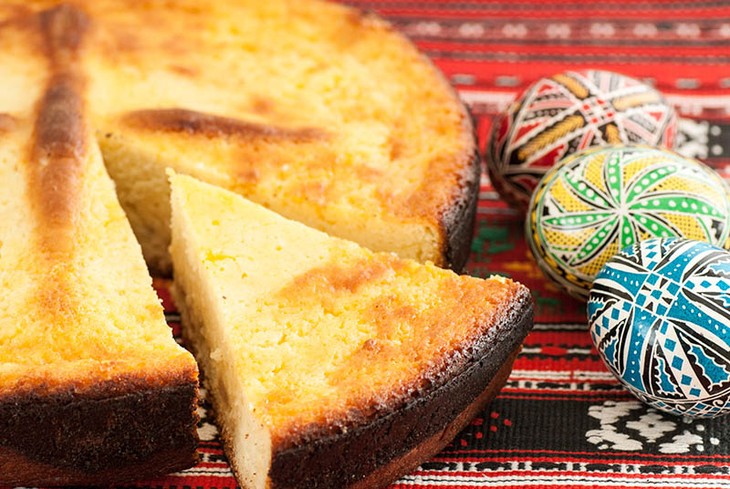 Traditional pască with raisins and sour cream. (Photo: Rolandia.eu) Traditional pască with raisins and sour cream. (Photo: Rolandia.eu) |
VOV Reporter: What about drinks accompanying the food? Are there any special types?
Gabriela Drobota: Well, Romania is blessed with excellent wine and beer. During special occasions a variety of delicious cakes is a popular necessity in Romania. A few such local dishes of Romania include: Ciorba, Mititei (also known as Mici, Tochitura, Mamaliga.
VOV Reporter: So now we know what drinks to try when we visit Romania. Thanks a lot, Gabriela. Can you tell us more about the Romanian people and lifestyle?
Gabriela Drobota: Romanians are warm, intelligence & passionate people. Street, violent and car crime is barely visible in everyday society and is nowhere near as significant as western Europe and few cities pose problems for walking late at night. Whilst one should always take basic precautions, you are unlikely to encounter any sense of feeling unsafe in populated areas, partly because Romanian society is still a strong and cohesive community force with deep family & faith values.
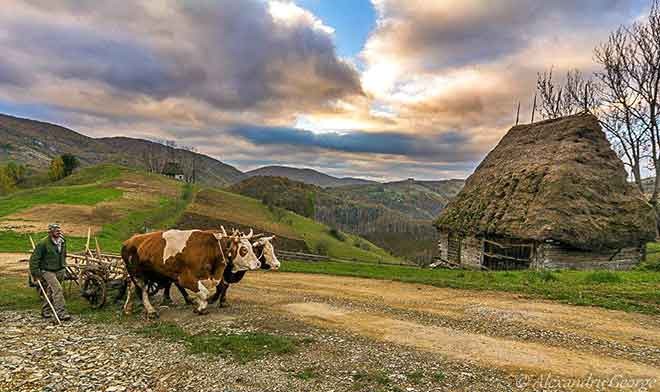 Carpathian mountains in Romania. (Photo: internet) Carpathian mountains in Romania. (Photo: internet) |
VOV Reporter: Now a final question. We’re all very curious about Dracula legend which is associated with Romania. Tell us more about that, please.
Gabriela Drobota: Tales of the supernatural had been circulating in Romanian folklore for centuries when Irish writer Bram Stoker picked up the thread and spun it into a golden tale of ghoulishness that has never been out of print since its first publication in 1897. To research his immortal tale, Stoker immersed himself in the history, lore and legends of Transylvania, which he called a "whirlpool for the imagination." Bram Stoker's Dracula novel was published in Romanian for the first time in 1990.
Count Dracula, a fictional character in the Dracula novel, was inspired by one of the best-known figures of Romanian history, Vlad Dracula, nicknamed Vlad Tepes (Vlad the Impaler), who was the ruler of Walachia at various times from 1456-1462. Born in 1431 in Sighisoara, he resided all his adult life in Walachia, except for periods of imprisonment at Pest and Visegrad (in Hungary).
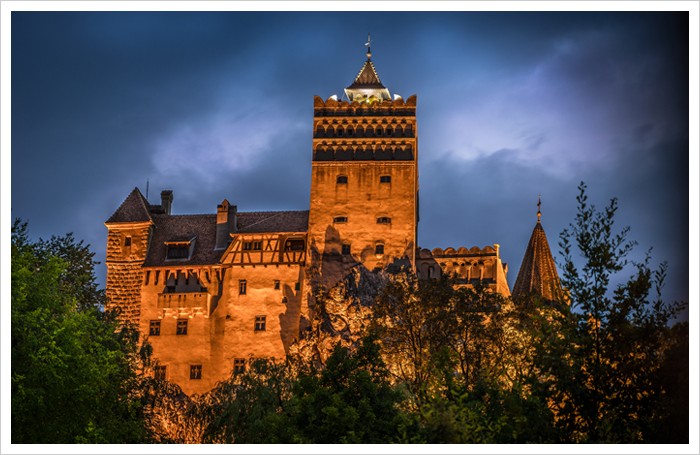 Count Dracula's Bran castle in Transylvania. (Photo: Romaniatourism.com) Count Dracula's Bran castle in Transylvania. (Photo: Romaniatourism.com) |
Although he never traveled to Romania, Stoker crammed his book with descriptions of many real locations that can still be visited in present-day Romania. They include Sighisoara - the most important historical places associated with Vlad Tepes, such as the 14th century town of Sighisoara where you can visit the house in which Vlad was born (now hosting a restaurant and a small museum of medieval weapons).
What is interesting about Vlad Tepes or Vlad the Dracula is that for us, Romanian, he was a hero. He was portraited by the writer as the Vampire, an evil spirit, an evil character, but actually in Romania, he’s portraited the hero because he was impaling the bad people that were stealing or doing the bad things in Romiana and protecting the honest people. So he’s one of our national heroes and rulers from the medieval time and everybody respects this figure in Romania.
VOV Reporter: Romania is truly a hidden gem of Europe, I have to say. Thank you so much for joining us today. We wish you all the best in life and work!